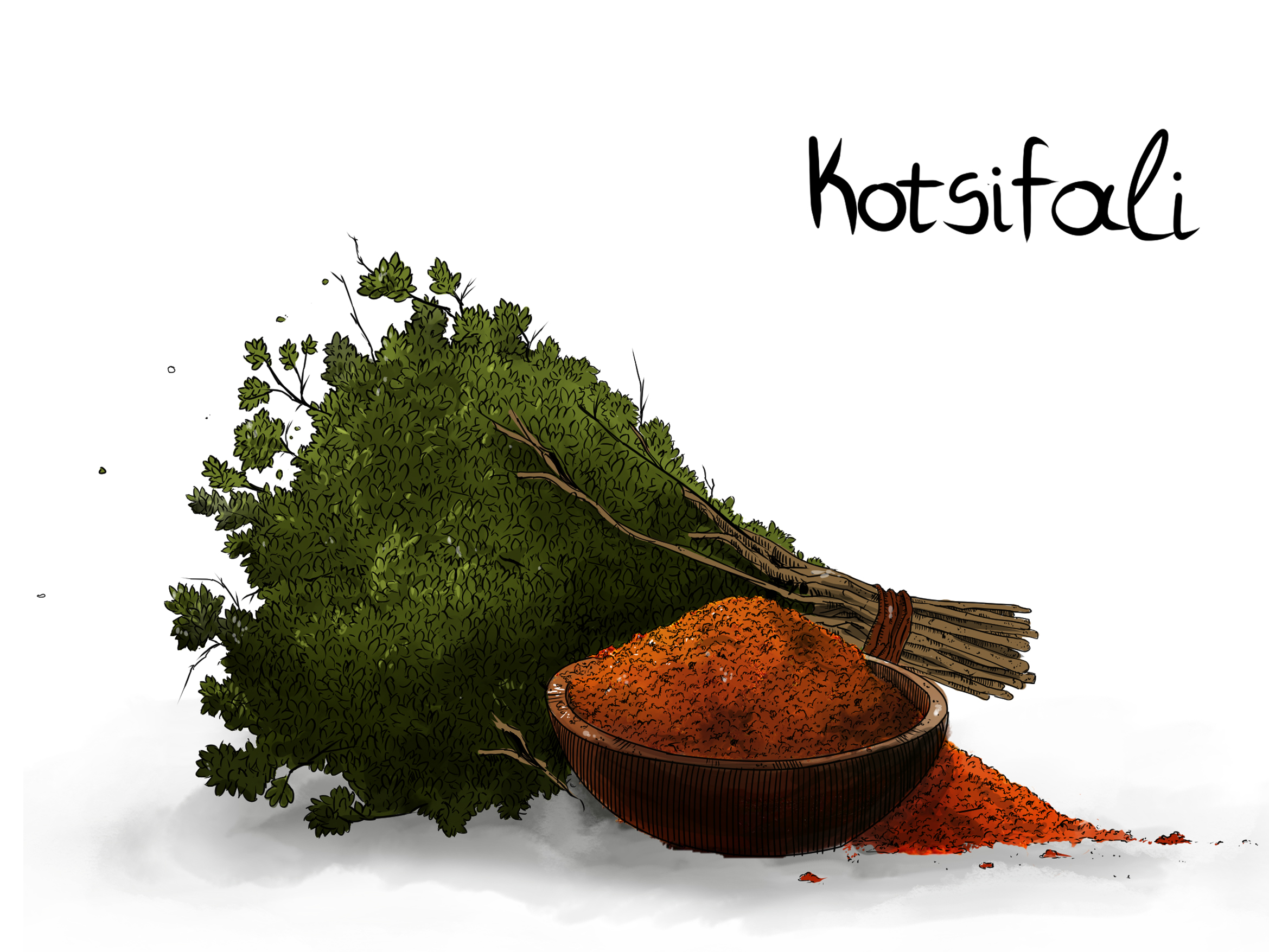
Kotsifali
By Yiannis Karakasis MW
At a glance
Κotsifali could probably be considered the alter ego of Mandilari, in the way Merlot is so considered for Cabernet Sauvignon in Bordeaux. It is grown mainly on Crete, where it is one of the most important red varieties. It makes wines that are not very deeply coloured and tend to turn a brick colour relatively quickly. It is widely planted, covering an area of 400 ha.
Relatively low in tannins and acidity but high in alcohol, it often needs the support of robust Mandilari. However, producers increasingly experiment with single varietal fruity versions as they seem to value its noble characteristics—a promising variety.
Intensely aromatic, with aromas of red berries like cherry, plum and strawberry, sweet spices and Mediterranean herbs.
History
Contrary to Mandilari, it is primarily planted on Crete. The name comes from the word kotsyfi (blackbird) and is linked to the bird’s preference for its medium-sized berries.
In the vineyard
Ιt is a vigorous, productive and disease-resistant variety somewhat prone to downy mildew and botrytis, with medium-large bunches. Ιt ripens in mid to late August to early September. The prime challenge is balancing its high alcohol and providing colour and tannins to the must, all-natural traits of Mandilari, its ideal partner. However, better viticulture and lower yields have led to more interesting single varietal wines that present a more structured and balanced version of the variety.
So far, Kotsifali presents high clonal diversity with five biotypes under research.
Terroir
The variety behaves best in areas with hot summers, low altitudes, and light and dry soils. There are infestations during the ripening period in humid locations and rainy years, sometimes intense, from botrytis.
In Archanes PDO (a major part of the blend with Mandilari)
Archanes is the western valley that runs up the eastern foothills of Mt Youchtas, within sight of Psilirotis. Gravelly soils at a maximum 450 m elevation.
Kotsifali is well-suited to the soil and climatic conditions of Archanes and gives high-quality wines with intensely aromatic characteristics. In contrast, Mandilari offers wines of high acidity with intense purple colour. No specific blending proportions exist, although a 75%–25% Kotsifali/Mandilari is often adopted.
In Peza and Candia (a major part of the blend with Mandilari)
Peza is the eastern valley of Mt Youchtas with limestone soils at 500–600 m elevation. It produces red wines of Kotsifali and Mandilari mainly in a ratio of 75%–25%.
In Candia PDO, a broader area, it is co-fermented with Mandilari in a proportion of 30–70%.
Wine styles
Single varietal: either in a simple fruity style or a more structured and age-worthy style that needs time to tame the tannins.
Blends: It is blended in Peza or Archanes PDO with Mandilari or with international varieties in other areas
Ageing potential
Kotsifali wines can be delicious when young, combining all the perfume and the brightness of red fruit. Depending on the style, drink the wines 2–6 years following the harvest.
Perfect pairing
Try it with charcuterie and bbq dishes.



